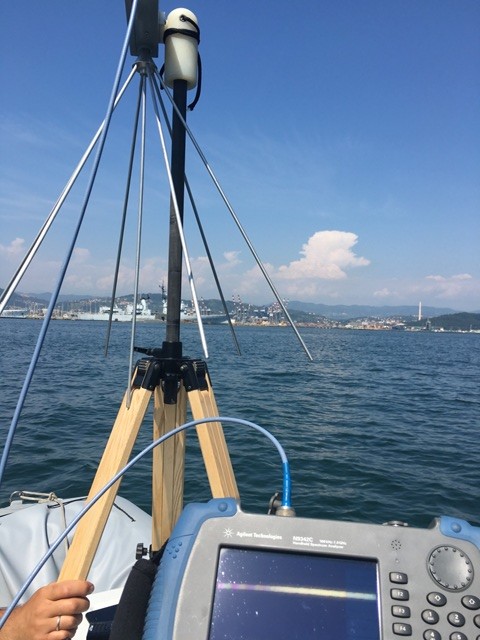Type Approval and MED Directive

The term TYPE APPROVAL defines the approval procedure for a product by a naval Registry. As an alternative, the device can be certified in compliance with the MED Directive (Maritime Equipment Device). The prerequisite for this type of certification is for the device to fall into the categories indicated by the Directive itself. The conformity of the product with the requirements of the directive is highlighted by the symbol of a “HELM” on the data plate and/or in the issued certificate also denominated by the Classification Company, , according to its own technical regulations.
The certification is the task of the Notified Bodies as per the Directive. The European Classification Societies are notified bodies themselves.
The TESLAB laboratory is accredited by Bureau Veritas and recognised as compliant with regulation 17025 by the Italian Naval Register (RINA) (RINA)
Thanks to these acknowledgments, all approval tests tests can be carried out in our laboratory in full compliance with the requirements of the main international shipping registers, in order to obtain the TYPE APPROVAL or the MED Certification of the device. Based on the results of laboratory tests, a test report in English , accepted and appreciated by the main companies in the sector, such as:
- Italian Naval Register (RINA) – Italy
- ABS – USA
- Bureau Veritas – France
- DNV-GL – Norway and Germany
- Lloyd’s Register – England
- Russian Maritime Register of Shipping – Russia
- IACS – International Association of Classification Societies LTD
The TYPE APPROVAL or the MED Directive require the execution of a large number of tests to verify the correspondence of the test sample to the requirements. These tests range from EMI EMC Electromagnetic Compatibility tests, performed in a semi-anechoic chamber , to Climatic and Vibration that simulate the possible environmental conditions to which the equipment under test EUT (equipment under test) or DUT (device under test) will be subjected during the standard life cycle on board.
The main Tests required by the Registers for product approval are:
- Visual Inspection, to verify the correspondence of the product to the request for approval.
- Performance Test, to verify the operational characteristic.s
- External power supply failure, verification of operation during a power failure.
- Power supply variations, verification of operation during the variation of the supply voltage.
- Dry Heat, Verification of operation in a high temperature dry environment.
- Damp Heat, Verification of operation in a high temperature damp environment.
- Cold,verification of operation at low temperatures.
- Vibration, verification of operation during the application of mechanical stress (vibrations and shocks).
- Inclination, verification of operation during static or dynamic inclination of the EUT.
- Insulation Resistance, measurement of insulation resistance.
- High Voltage, verification of the dielectric strength.
- Salt Mist, verification of resistance in environments with high saline content.
- Electrostatic Discharge, verification of operation during application of electrostatic discharge.
- Electromagnetic field, verification of operation during the application of RF irradiated fields
- Conducted low Frequency, verification of operation when applying sinusoidal noise to audio frequencies.
- Conducted Radio Frequency, verification of operation during the application of RF electromagnetic fields.
- Electrical Fast Transients / Burst, verification of operation during the application of transient disturbances
- Surge, verification of operation during the application of pulse overvoltage
- Radiated Emission, measurement of the radiated electromagnetic emission level
- Conducted Emission, measurement of the electromagnetic emission level fed into the power and communication networks
- Flame retardant, fire resistance